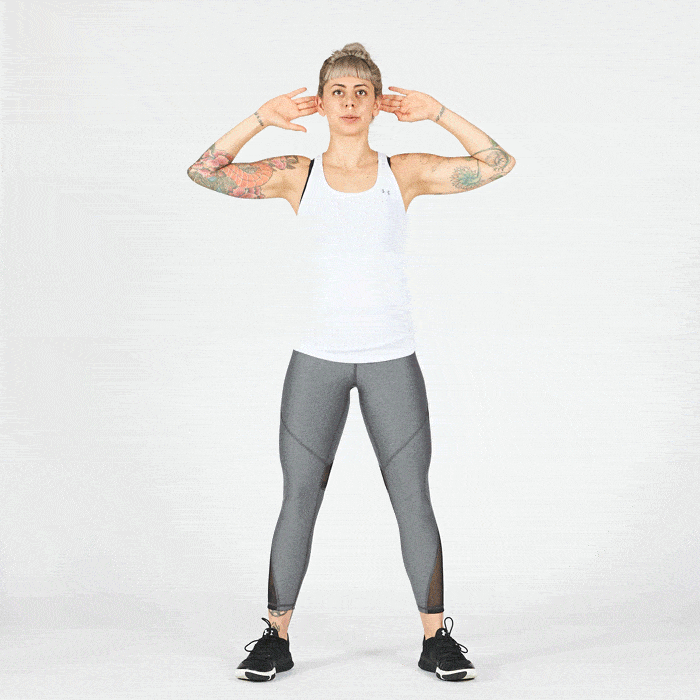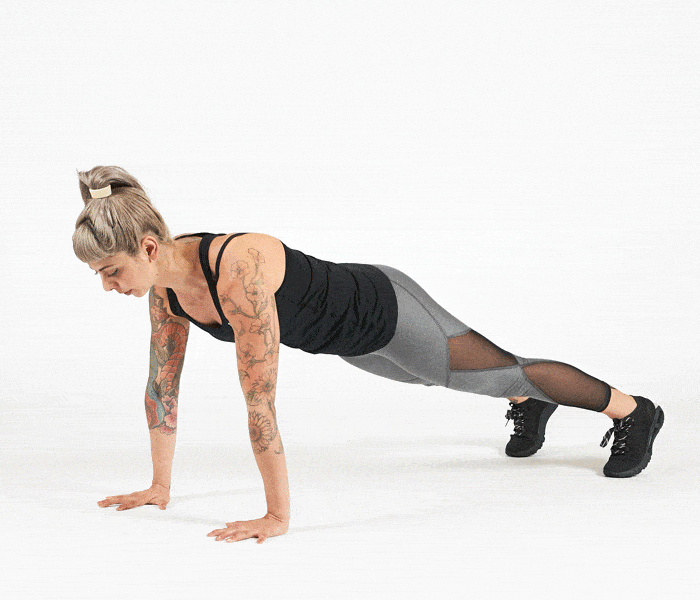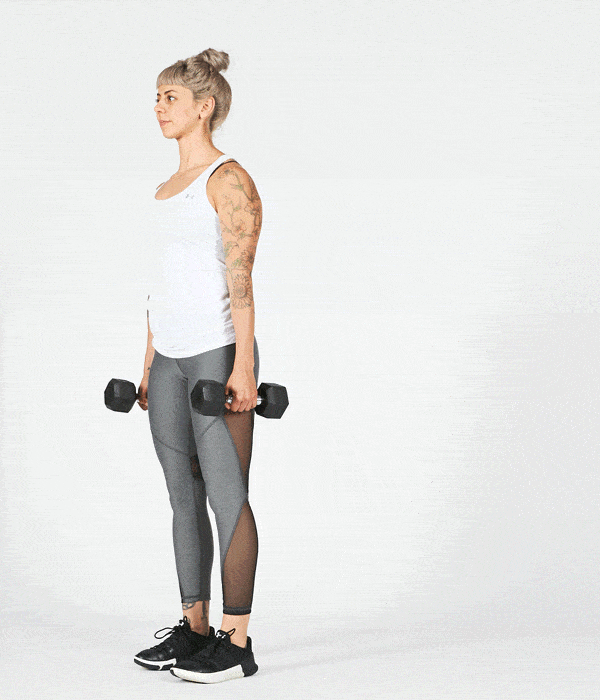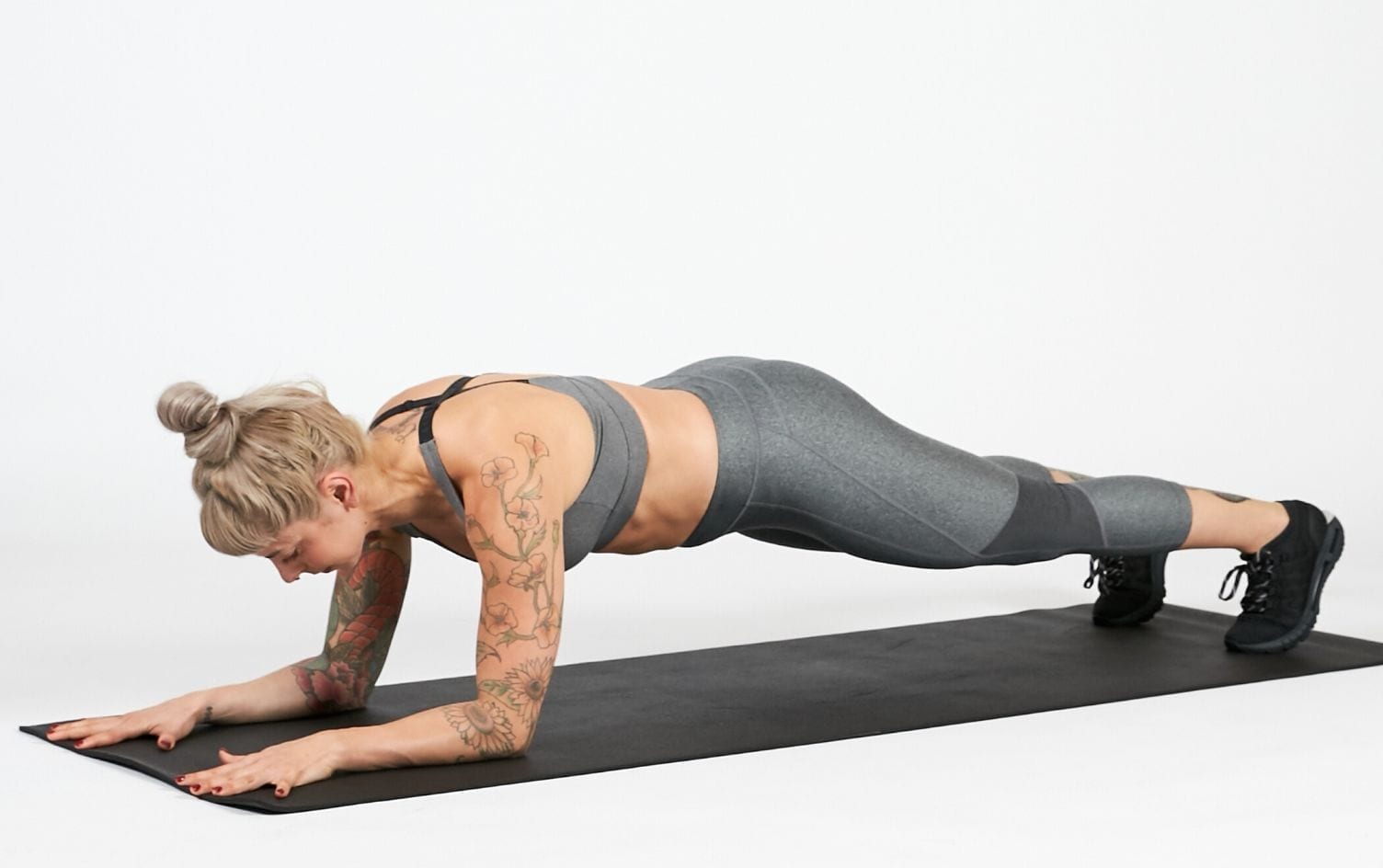If you’re starting a strength routine, you might be tempted to try some of those cool moves all the fitness influencers are showing off on Instagram. However, it’s important to have a solid foundation first. Even the fittest of the pack had to start with the basics. So, if you’re new to strength training, your best bet is to start by mastering a handful of basic exercises — then worry about the insta-worthy exercises later.
“The key when you’re just starting a strength routine is to build a strong foundation and really focus on the muscles you feel working during movements,” says Cori Lefkowith, a NASM-certified personal trainer and owner of Redefining Strength in Costa Mesa, California. “Starting with bodyweight exercises is a great way to do that,” she adds.
By starting with basic bodyweight movements, you can learn what it feels like to engage the target muscle groups without worrying about what weight to choose or how to use the equipment. Then, when you progress to more advanced exercise variations — or add weight — you’ll be able to tell if your form is off right away. “Too often we jump in and try variations that are too hard for us, which leads to us compensating and performing the movement incorrectly,” Lefkowith says. If you don’t use proper form, you won’t engage the right muscles during the movement, which can mean stalled progress at best, and injury at worst.
Think of the pushup: If you try a version that’s too advanced for you right now, you’ll likely feel it in your neck or elbows, as opposed to your chest, shoulders and arms. But if you start with an easier pushup variation, you’ll learn how the move is supposed to feel, and build strength in all the right places.
5 BEST BEGINNER STRENGTH EXERCISES
The following five strength exercises cover fundamental movement patterns, and form the base for almost every other exercise you will do. If you’re just starting out, master these basic exercises before moving on to more advanced variations. “Think of these movements as building the foundation of your house,” Lefkowith says. “You want your foundation made out of concrete, not quicksand, which means starting with moves that allow you to create good movement patterns by using proper form.”
Plus, they’re all bodyweight, because yes, you can get strong using just your body weight.
1. BODYWEIGHT SQUAT

“Major muscle groups are used in the [squat], all of which are needed to live a functional and healthy life,” says Doris Thews, senior vice president of fitness and innovation for VASA Fitness and 2019 IDEA Fitness Instructor of the Year. Plus, bodyweight squats serve as a foundational movement that many other exercises are based off of, she adds. So, if you want to do back squats, jump squats or wall sits, you have to nail basic bodyweight squats first.
The move: Stand with your feet hip-width apart. Push your butt back and bend at the knees to lower your hips toward the floor. Aim to end with thighs parallel to the floor and knees in line with your toes. Drive through your heels to push back to standing.
2. PUSHUP

“If you can learn to do the pushup, you’ll have a good foundation to go into other pressing exercises, like the bench press,” Lefkowith says. Just be sure to start with the right variation for your current ability level.
The move: Get into high plank position on the floor. Your hands should be directly under your shoulders, slightly wider than your ribcage. Brace your core and bend at the elbows to lower your body to the floor with control. Make sure your elbows flare out no more than 45 degrees. Push back up to the top position. Elevate your hands on a bench, or drop to your knees if needed.
3. STATIC LUNGE

Bodyweight lunges, in general, are a basic movement, but are often blamed for knee pain. Static lunges tend to be one of the better options for beginners, because you are better able to control the muscles you use to perform the move, Lefkowith says. “The up-and-down movement can also improve your hip mobility, while allowing you more stability instead of having to control a step forward,” she adds.
The move: Stand with your feet hip-width apart. Take a big step back with one foot and lower your back knee down toward the floor to create a 90-degree angle with both knees. Shift your weight onto your front foot, first making sure your front knee is in line with your front ankle. Then, drive through the heel of the front foot and engage the glutes to push yourself back up to standing until both legs are extended. Without moving your feet, bend your front knee to start your next rep. Keep your shoulders down and back throughout the movement. Do all reps on one side before switching to the other.
4. INVERTED ROW

The inverted row is a great beginner back- and shoulder-building exercise because it’s easy to modify to suit your current level of strength. It also teaches you how to keep your body stable as you pull yourself up to the barbell.
The move: Stand tall. Place a barbell in a rack at about waist height (put the barbell higher in the rack to make the movement easier). Hold the barbell with both hands using an overhand grip and allow your arms to extend fully. Your body should be a straight, plank-like position. Pull your elbows straight back to bring your sternum in contact with the barbell (you may need to adjust your foot position to make this possible). Pause briefly at the top of the movement before lowering yourself back down with control. Step your feet forward to make the move more challenging.
You can also use a suspension trainer or gymnastic rings for inverted rows.
5. FOREARM PLANK

The plank is a key move to master when you’re just starting out. “It helps you build up your core strength for pushups and inverted rows,” Lefkowith says. “It will also help you learn how to engage your abs to protect your lower back during squats and deadlifts,” she adds.
The move: Set-up on the floor in a plank position with your elbows bent and directly beneath your shoulders, forearms flat on the floor. Extend both legs behind you and support your weight on your toes. Brace your core and squeeze your glutes to hold the position. Don’t allow your low-back to sag toward the floor. Thews recommends beginners start by holding the position for 10 seconds, gradually building their way up to 1 minute. If you can’t hold a straight-leg plank, begin with your knees on the floor.
HOW TO ADVANCE THE EXERCISES
Once you feel comfortable with these basic exercises, or a personal trainer gives you the thumbs-up, you can start testing out harder variations.
One of the simplest ways to make an exercise more challenging is to add weight, but there are plenty of other ways you can increase the intensity. You can slow down or speed up your tempo, play with work/rest intervals or try a unilateral (single-arm or single-leg) variation.
Some exercises — like the pushup, plank and inverted row — are inherently scalable. If you’ve been doing pushups on an incline, for example, lower the surface height of the box or bench. If you’ve been doing planks on your knees, try extending one or both legs behind you. To make inverted rows more challenging, simply step your feet forward or lower the barbell height so your body is more horizontal. (For more ideas, read our 6 Ways to Make Bodyweight Exercises Harder.)
If you don’t feel the correct muscles working with the more challenging exercise variation, go back to the variation you were doing before, Lefkowith says. Or, increase the difficulty of the exercise more gradually by doing only a few reps of the harder version during a regular set. “But don’t rush,” Lefkowith says. “Give your body time to adjust and adapt.”



